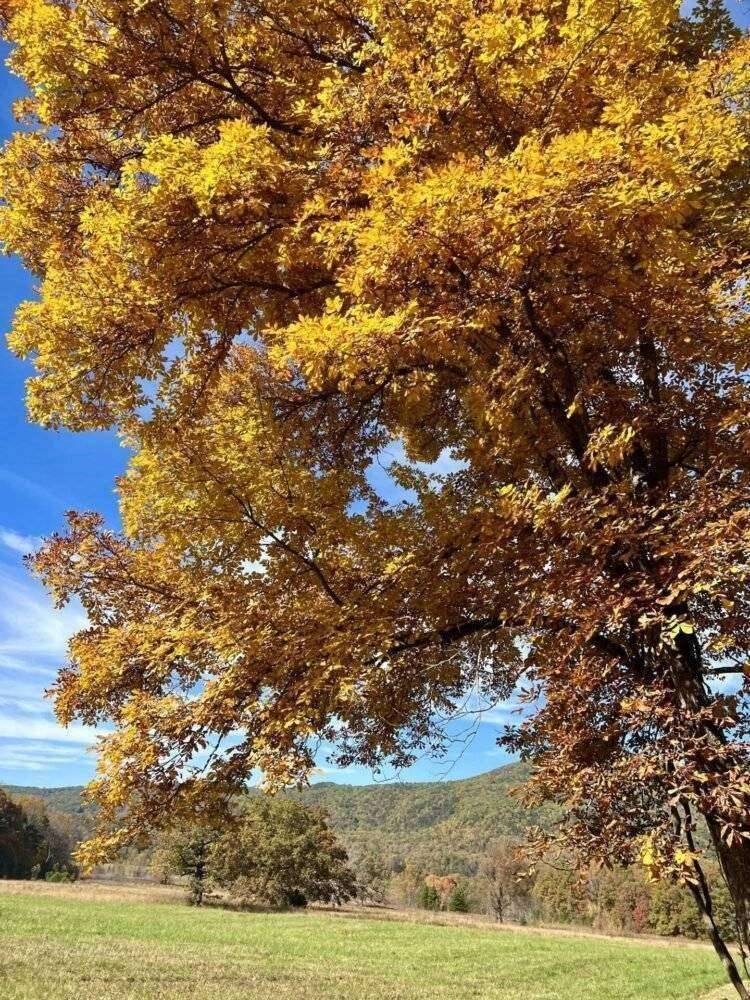If are you planning your trip to Cuba and want to know the basic things then you’re at the right place. Cuba is the largest island in the Caribbean Sea, with beautiful mountains and rolling hills covering approximately one-third of the land. The remaining two-thirds of the island is used mainly for farming. While Cuba is a safe travel destination, there are some warnings and restrictions that travelers should be aware of.
Things You Need To Know While Planning a Trip to Cuba
Travel Warnings and Restrictions
If you’re a US citizen, trip to Cuba must be facilitated by a visiting company based within the United States. Visitors must travel with a direct itinerary that appears to be engaging in significant trades with Cuban individuals. Unfortunately, lounging around on Cuba’s sunny beaches and sipping mojitos all day is prohibited. However, US Cuba travel administrators can help in organizing trips that highlight the best of what the island offers, including rum, cigars, museums, and the friendly nature of the Cuban people.
What You Need to Enter Cuba
For a trip to Cuba, travelers must have a valid passport with at least six months of validity at the time of entry. Tourist visas are also required for all guests. Entering Cuba without government authorization can result in arrest and imprisonment. Canadian citizens can enter Cuba without a visa if their trip is for tourism purposes, but a visa is required for any business travel.
1. Tourist Visas:
- Eligibility: Tourist visas are typically available to travelers visiting Cuba for leisure, exploration, or vacations. They are the most common type of visa for tourists.
- Purpose: Tourist visas allow travelers to experience Cuba’s culture, heritage, and attractions. They are suitable for sightseeing, enjoying the beaches, and immersing in local traditions.
2. Business Visas:
- Eligibility: Business visas are intended for travelers engaging in commercial activities, such as meetings, conferences, trade, and investments in Cuba.
- Purpose: Business visas facilitate activities related to trade, commerce, or investments. They allow individuals to attend business meetings, explore economic opportunities, and represent their companies in Cuba.
3. Family Reunification Visas:
- Eligibility: Family reunification visas are designed for individuals with Cuban family members who are citizens or residents of Cuba.
- Purpose: These visas enable family members to reunite with their loved ones in Cuba. They may be used for visiting family, attending special occasions, or providing support to relatives.
4. Student Visas:
- Eligibility: Student visas are available to international students enrolling in Cuban educational institutions.
- Purpose: These visas are for individuals pursuing academic studies, language courses, or research programs in Cuba.
Check out: Dark Tourism: What Is It and Why Is It Popular?
Medical Insurance and Vaccinations
Medical insurance is also required for trip to Cuba. While vaccinations are not required, they are recommended for travelers, including those for hepatitis A, typhoid, and cholera. Yellow fever vaccinations are required for travelers arriving from regions with yellow fever, such as Brazil or Colombia. Cuban immigration officers will check for proof of medical insurance upon arrival.
U.S. insurance policies are not accepted in Cuba, so travelers must secure insurance with Cuba’s Travel Protections organization.
Must-See Destinations
Havana
The capital city of Cuba, Havana, is a captivating blend of colonial architecture, classic cars, and a vibrant arts scene. Explore the historic Old Havana (Habana Vieja), stroll along the Malecón, and immerse yourself in the rhythms of salsa music.
Viñales
Located in the Pinar del Río province, Viñales is renowned for its stunning limestone mogotes, tobacco farms, and unique landscapes. Take a horseback ride through the Viñales Valley or visit a tobacco plantation to witness traditional cigar-making.
Trinidad
Trinidad, a UNESCO World Heritage site, is a well-preserved colonial town with cobblestone streets and colorful buildings. Discover the Museo Romántico, hike to the nearby waterfalls, and enjoy live music in Casa de la Musica.
Varadero
For sun and sea enthusiasts, Varadero offers 20 kilometers of pristine beaches along the Hicacos Peninsula. Enjoy water sports, scuba diving, and the convenience of all-inclusive beachfront resorts.
Santiago de Cuba
Santiago de Cuba is Cuba’s second-largest city and a cultural hub. Explore the historic Castillo del Morro, attend a carnival, and visit the Santa Ifigenia Cemetery, where Fidel Castro’s tomb is located.
Viñales Valley: Where Tobacco Fields and Limestone Hills Make Nature Go “Dayum!”
Hey there, adventurous souls! Let’s talk about Viñales Valley, a UNESCO World Heritage Site that’s all about sweeping vistas, charming tobacco fields, imposing limestone hills, and a traditional rural life that will have you feeling like you’ve stepped back in time (in the best way possible).
Cienfuegos: Embrace the French Flair and Say “Bonjour” to Architecture
Welcome to Cienfuegos, a city that’s all about French influence, beautiful architecture, and a layout that will make your inner Francophile jump for joy. Explore the historic center and soak up the charm of Parque José Martí. And don’t forget to visit the Palacio de Valle, a masterpiece of architectural eye candy that will make your jaw drop.
Cayo Coco and Cayo Guillermo: Beach Bliss, Baby!
These stunning cays, part of Jardines del Rey, are your ticket to secluded and tranquil paradise. Grab your swimsuit, slather on the sunscreen, and get ready for some serious beach bumming and snorkeling among vibrant coral reefs. It’s time to let the ocean waves wash away your worries!
Camagüey: Tinajones and Delightfully Winding Streets
Camagüey, Cuba’s third-largest city, is a hidden gem that will steal your heart with its well-preserved historic center. Get lost (in a good way) as you wander through narrow winding streets and stumble upon charming plazas. And keep an eye out for the unique tinajones, those large earthenware jars that add a touch of authenticity to the city’s vibe.
Baracoa: Where Lush Landscapes and Chocolate Dreams Collide
This place is an absolute paradise of lush landscapes, cocoa plantations, and mouthwatering cuisine. Hike up El Yunque, the flat-topped mountain that reigns supreme in Baracoa, and prepare to be rewarded with breathtaking views. And don’t leave without indulging in the unique flavors of Baracoa’s chocolate creations.
Holguín: Parks, Squares, and All the Green Spaces You Can Handle
Calling all nature enthusiasts and lovers of greenery: Holguín, aka the “City of Parks,” is just what you need. This place has a pleasant atmosphere that will make you want to kick back, relax, and soak up the surroundings. With numerous squares and green spaces around, you’ll find the perfect spot to enjoy a picnic or simply revel in the peace and tranquility. And let’s not forget about Guardalavaca Beach, a popular destination where the ocean waves will lull you into a state of pure bliss.
Cuban Cuisine
Oh, Cuba, you exquisite culinary gem! Prepare yourself for a mouth-watering adventure through the savory streets of Cuban cuisine. Get ready for a fusion of flavors that will have your taste buds doing the mambo and your stomach shouting “¡más, por favor!” Let’s take a bold bite into the delightful dishes you absolutely cannot miss:
Ropa Vieja: Picture this: tender, slow-cooked beef shredded to perfection, swimming in a tantalizing tomato-based sauce. This classic Cuban dish, my fearless foodies, is called Ropa Vieja. Served with a side of rice, black beans, and fried plantains, it’s a hearty meal fit for a bold queen like yourself. Just prepare yourself for the explosion of flavor that will leave you wanting more.
Moros y Cristianos : Now, don’t let the name fool you, my independent explorers. Moros y Cristianos, which translates to “Moors and Christians,” is not some historical reenactment on your plate. It’s actually a traditional Cuban dish of black beans and white rice cooked together with a medley of magical spices. This dish is more than meets the eye, my friends. It’s a side dish that can hold its own and complement any Cuban meal.
Arroz con Pollo: When comfort comes knocking, Arroz con Pollo is the dish that will answer the door with open arms and a saffron-infused embrace. Tender chicken pieces mingling with aromatic saffron-infused rice, vegetables, and olives create a flavor explosion that will transport you straight to culinary bliss. It’s like snuggling up in a warm and cozy blanket of deliciousness.
Tostones: Craving something crispy and savory? Well, get ready to meet your new addiction: Tostones. These green plantain delights are twice-fried to crispy perfection, creating a snack that’s truly irresistible. Whether you enjoy them as a side dish or an appetizer, these little golden nuggets will have you reaching for dip after dip of garlic mojo or aioli sauce.
Yuca con Mojo: Time for a simple yet delicious Cuban side dish that will surprise you with its garlicky greatness: Yuca con Mojo. This starchy root vegetable, known as yuca or cassava, is served with a mojo sauce that will make your taste buds sing. The combination of garlic and citrusy goodness will have you wondering how something so simple can be so damn tasty.
Cuban Sandwich: Prepare for a taste bud revolution, my solo warrior sandwich lovers! The Cuban sandwich is a legendary creation that will rock your world. Imagine Cuban bread embracing a filling of roast pork, ham, Swiss cheese, pickles, and mustard. Then, this masterpiece is pressed to divine perfection, resulting in a quick and always satisfying meal. The combination of flavors and textures in this beloved classic will have you doing a happy dance with every bite.
Ideal Seasons for Visiting Cuba
-
High Season (November to April): The high season, which extends from November to April, is the most popular time to visit Cuba. During this period, the weather is generally at its best, characterized by comfortable temperatures, clear skies, and minimal rainfall. It’s the ideal time for outdoor activities and cultural exploration.
- Events: This season coincides with numerous cultural events and festivals, such as the Havana International Jazz Festival in January or the vibrant Havana Carnival in August.
Shoulder Seasons (May and October):
- During the shoulder seasons in May and October, Cuba experiences transitions between the wet and dry seasons. These months offer a balance between weather conditions, affordability, and fewer crowds, making them a favorable choice for some travelers.
Low Season (June to September):
-
The low season, which spans from June to September, overlaps with the hurricane season in the Caribbean. This period brings the risk of hurricanes and tropical storms, resulting in heavy rainfall and strong winds. Travelers should exercise caution and stay prepared for potential disruptions.
- Advantages: Despite the weather-related challenges, the low season offers budget-friendly options, fewer tourists, and the opportunity to witness Cuba’s natural beauty amid lush landscapes.
Considerations for Hurricane Season:
-
Travelers planning a visit during the low season (hurricane season) should take several precautions, including:
- Travel Insurance: It’s crucial to purchase comprehensive travel insurance that covers trip cancellations, delays, and interruptions due to hurricane-related issues.
- Flexibility: Have flexible travel itineraries and be prepared to adapt plans if necessary.
- Local Updates: Stay informed about weather updates and heed the advice of local authorities for safety.
Travel Restrictions for U.S. Citizens
For citizens of the United States, it’s important to note that the U.S. government still does not authorize tourism to Cuba. Travel must fall into one of 12 categories to be considered legitimate, including family visits, educational activities, religious purposes, and humanitarian reasons. While President Joe Biden has vowed to quickly fix the travel restrictions imposed by the previous administration, travelers must still be sure to follow the legal requirements for trip to Cuba safely and securely.
-
Categories of Authorized Travel: The U.S. government has established specific categories of authorized travel to Cuba. These categories include activities such as family visits, educational programs, support for the Cuban people, and more. It’s essential to understand which category best aligns with the purpose of your trip.
-
Legal Requirements: When traveling from the United States to Cuba, U.S. travelers must comply with certain legal requirements, which may include keeping detailed records of their trip, adhering to specific itineraries, and not engaging in prohibited transactions. Familiarize yourself with these requirements and maintain the necessary documentation.
-
Check for Updates: Given that regulations can change, it’s advisable to check for the latest updates and requirements from the U.S. Department of the Treasury’s Office of Foreign Assets Control (OFAC) before embarking on your journey. Staying informed will help ensure a smooth and legally compliant visit.
Conclusion
With these tips, travelers can have a safe and enjoyable trip to Cuba while being mindful of the country’s legal and medical requirements and always remember to Travel Till You Drop!
Frequently Asked Questions (FAQ) for Planning a Trip to Cuba
1. Is it safe to travel to Cuba?
Cuba is generally considered a safe travel destination. However, like any other country, it’s essential to exercise caution and be aware of your surroundings, especially in crowded or tourist-heavy areas. Avoiding political demonstrations and respecting local laws and customs can contribute to a safe and enjoyable experience.
2. What are the travel restrictions for US citizens visiting Cuba?
For US citizens, travel to Cuba is subject to specific restrictions. Tourism to Cuba is not authorized by the US government, and travelers must fall under one of 12 authorized categories, such as family visits, educational activities, religious purposes, or humanitarian reasons. It’s crucial to familiarize yourself with these categories and comply with legal requirements to ensure a smooth and legally compliant visit.
3. What documents do I need to enter Cuba?
To enter Cuba, travelers must have a valid passport with at least six months of validity at the time of entry. Additionally, tourist visas are required for all visitors. It’s essential to obtain the necessary visas and authorization before traveling to Cuba to avoid any issues upon arrival.
4. Do I need medical insurance for a trip to Cuba?
Yes, medical insurance is required for all travelers visiting Cuba. While vaccinations are not mandatory, certain vaccinations are recommended, especially for travelers coming from regions with specific health risks. Yellow fever vaccination is required for travelers arriving from countries with a risk of yellow fever transmission.
5. What are the best times to visit Cuba?
The high season in Cuba, spanning from November to April, is the most popular time to visit due to favorable weather conditions and various cultural events. However, shoulder seasons in May and October offer a balance between affordability and fewer crowds. The low season, from June to September, coincides with the hurricane season, presenting challenges but also opportunities for budget-friendly travel.
6. What are the must-see destinations in Cuba?
Cuba offers a diverse range of attractions, including historic cities like Havana and Trinidad, natural wonders like Viñales Valley, and pristine beaches in Varadero and Cayo Coco. Exploring these destinations allows travelers to experience Cuba’s rich culture, history, and natural beauty.
7. How can I ensure a legally compliant trip to Cuba as a US citizen?
To ensure a legally compliant trip to Cuba as a US citizen, it’s essential to choose an authorized travel category that aligns with the purpose of your visit, such as family visits, educational activities, or support for the Cuban people. Additionally, travelers must adhere to legal requirements, maintain detailed records of their trip, and stay informed about any updates or changes in regulations from the US government.
Book Your Trip : Check Out My Resources for Your Travel Needs
Use Skyscanner to find a cheap flight. This is my very first stop when I’m looking for my next trip. It’s a fast, easy-to-use search engine that is perfect for finding an affordable flight, a perfect hotel, and the right rental car for you in locations around the globe.
Book Your Accommodation
If you are looking for a super budget friendly location and are open to a hostel stay, make sure you book your hostel with Hostelworld. It offers the broadest range of quality hostels around the world.
If you’d prefer a hotel or a guesthouse for stays less than 28 days, drop on over to Booking.com It’s perfect for providing excellent options, a ton of user reviews, and prices to fit every budget.
For stays over 28 days, AirBnB still remains my #1 choice. User reviews and monthly pricing allow for some incredible deals all around the world.
Don’t Forget Travel Insurance
Travel insurance is but a small up-front investment that you won’t want to leave home without. After just one experience of having to delay or cancel your trip or having your luggage stolen, you’ll wish you would have made that investment. I’ve hated my life a few times when the moment arose, and I decided to skip out. Let’s just say, I’ve changed my ways and recommend each of the following companies to protect your ass-ets.
My favorite companies are:
- SafetyWing (best for All Travelers)
- World Nomads (best of Adventure Travelers)
- MedJet (great for additional evacuation coverage)
Want to Travel for Free?
Travel credit cards allow you to earn points that can be redeemed for free flights and accommodation — all without any extra spending. Check out my guide to getting free flights to get started.
Ready to Book Your Trip?
Check out my Resource Page for the best companies to help you book your travel at reduced rates! This list will help you get to where you’re going. I know-I use them ALL the time!





